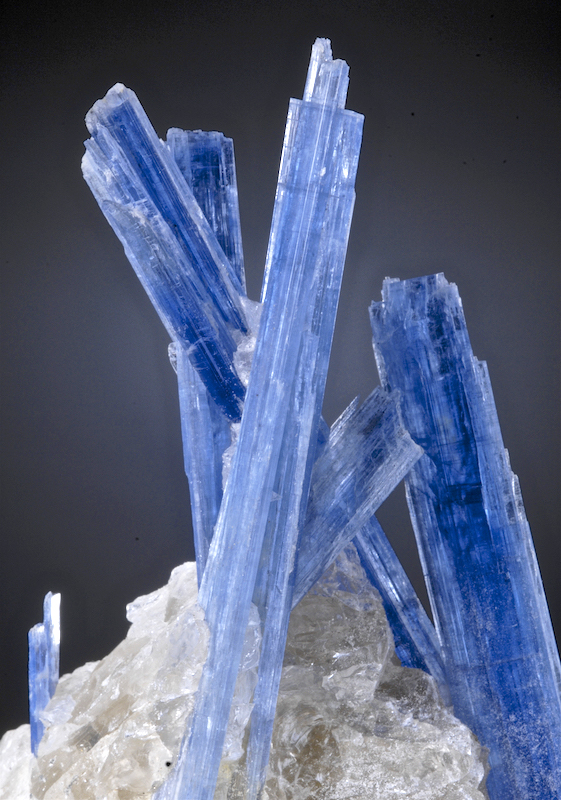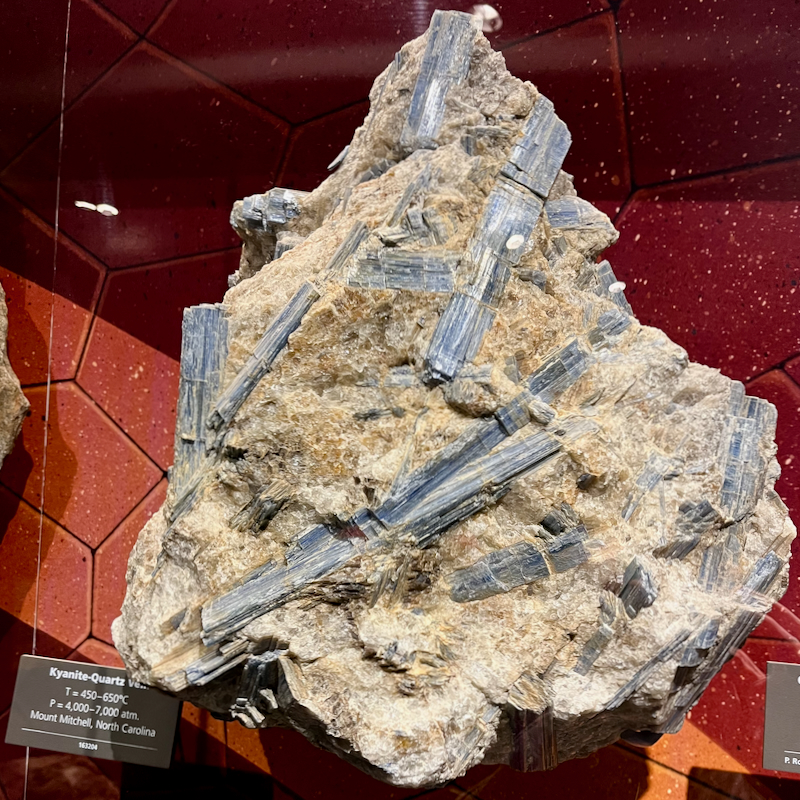Kyanite
In its standard habit, kyanite is one of those minerals that’s very easy to recognize, and you won’t mistake it for something else. Most often, it looks like a random pile of sword blades, and the blades are bright blue with lines along them that can be from cracks or splinters. If you’ve used a color printer before, sometimes one of the cartridges is called “cyan,” and both “cyan” and “kyanite” come from the Greek word for “blue.” Along with “kyanite” for its blue color, it also used to be called “disthene” (in Greek, di = two, sthene = force) for its special quality of being hard to scratch across its crystals, but easier to scratch along them. It also has a special quality beyond itself. In geology, scientists call some minerals “index minerals” because they tell us something about where or how they formed. Kyanite is an index mineral because it usually forms where there’s a lot of pressure and heat, so it tells you that the rock you found it in is metamorphic and formed far below the Earth’s surface.
| Formula | Group or Type | Shape | Hardness | Specific Gravity | Streak | Luster |
|---|---|---|---|---|---|---|
| Al2(SiO4)O | — | Triclinic | 5.5–7 | 3.53–3.67 | White | Vitreous to pearly |

